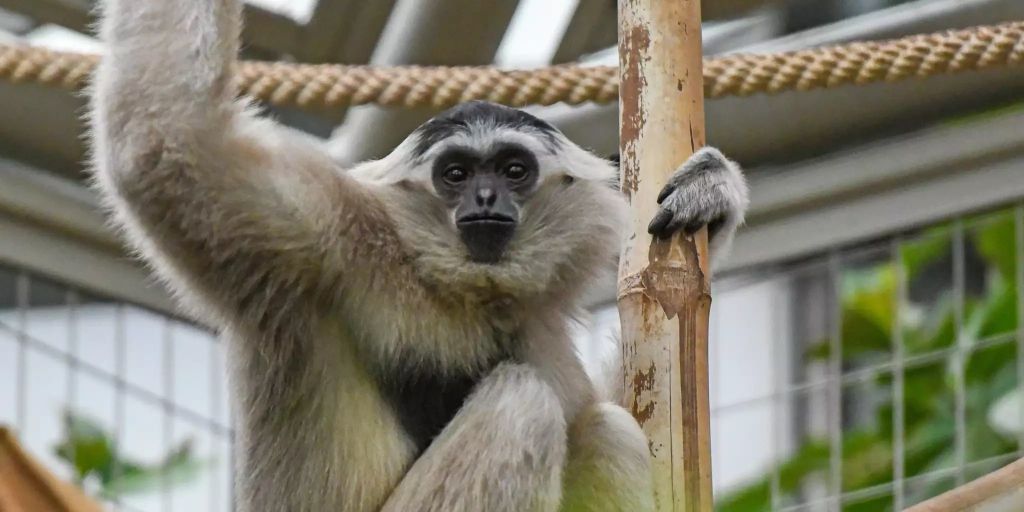A “Santa Claus surprise” is celebrating a birthday at Zurich Zoo on December 6, 2021: Qiwèn, the female capped gibbon, turns five.
Exactly five years ago today, on December 6, 2016, the capped gibbon female Qiwèn was born to Khmer (M, 37) and Willow (W, 34). This was a surprise at the time in that Willow was actually on the pill at the time. This in order to lengthen the natural birth interval of two to two and a half years somewhat (we reported).
Threatend species
Cap gibbons are classified as “critically endangered” according to the IUCN Red List. Since the birth of Qiwèn’s grandmother Iba 47 years ago, the wild cap gibbon population has decreased by around two thirds. The main threat to capped gibbon populations is hunting and the fragmentation and destruction of their natural habitat.
Big family at Zurich Zoo
Qiwèn has developed very well in recent years and will slowly but surely grow. It also means that she would naturally leave her family soon. Therefore, she WILL probably leave Zurich Zoo next year for England, where she can start her own family.
Qiwèn’s family has been living at Zurich Zoo for some time. Grandmother Iba came to the zoo from Thailand in 1982. Two years later, Khmer, Qiwèn’s father, was born. Over the years, new family members came while others left the zoo to start their own families in other zoos. Today, in addition to Qiwèn, her sisters Nyanyi (2013) and Srey (2018) and her brother Laju (2011) live in Zurich. Nyanyi lives in the facility next door with Akio, a male from England. Laju lives in the facility in the lower part of the ape house together with Lawa (2011), an aunt, as a companion.
Since gibbons live in pairs with their not yet sexually mature young animals, the family members live in different enclosures. Three generations of cap gibbons currently live at Zurich Zoo.
The Zurich Zoo has had gibbons in its inventory since 1939. At first these were white-hand gibbons, later the cap gibbons. Qiwèn is the 29th of 30 young animals born at Zurich Zoo.
The inconspicuous great apes
In addition to the well-known chimpanzees, bonobos, orangutans and gorillas, the 16 species of gibbon also belong to the great apes. They are often referred to as the little great apes. They are all distinguished by the lack of a tail.
Of all the great apes, gibbons have the longest arms compared to their body size. They use this for swinging swinging, which is typical for gibbons. The animals swing under the branches. The longings in the hands are shortened. This means that the fingers are automatically bent when the arm is outstretched. This enables the gibbons to hold onto the branches without exerting themselves.
More on the subject:

